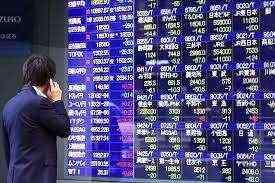
A shooting star candlestick pattern is a bearish formation in trading charts that typically occurs at the end of a bullish trend and signals a trend reversal. It is a popular reversal candlestick pattern that occurs frequently in technical analysis and is simple and easy to identify. If the open, low, and closing prices are almost the same, you can see a shooting star formation that, often interpreted by traders as a sign for a bearish move.

As a result, the shooting star candlestick pattern is often thought to be a possible signal of bearish reversal. The inverted shooting star is a bullish analysis tool, looking to notice market divergence from a previously bearish trend to a bullish rally. An inverted shooting star pattern is more commonly known as an inverted hammer candlestick. It can be recognized from a long upper shadow and tight open, close, and low prices — just like the shooting star. The difference is that the inverted hammer will have a bear run prior to the candle you’re looking for.
Shooting Star
After a sharp drop from the shooting star candle, the price started to print a few consecutive green bars. This upper price momentum continued until one of those bars finally closed above the nine period SMA line. That event served as the exit signal, which would have closed out this trade with a profit. The stop loss on the trade will be set at the high of the price bar that breaks below the trendline. Finally, we will need a way to monitor the price action if it moves in our favor to the downside, and exit the trade when the weight of evidence is pointing to an upside reversal.

When the RSI rises above 70, then the market is essentially in overbought mode and a bearish trend reversal is expected. When the RSI falls below 30, then the market is in an oversold condition and a bullish trend reversal is likely to happen. Notice how the price moves higher in a nice stairstep fashion with successively higher highs and higher lows during its progression. With the uptrend confirmed, we can now draw a trendline connecting the swing lows within the upward moving price action.
Shooting star Example
Depending on your comfort level and style of trading, you may choose one entry method over the other or choose some other variation altogether. In any case these are just a few of the ways in which we could structure a short trade following the bearish shooting star candlestick. In the illustration above you can see what the shooting star candlestick appears like. The risks of loss from investing in CFDs can be substantial and the value of your investments may fluctuate. 72% of retail client accounts lose money when trading CFDs, with this investment provider. CFDs are complex instruments and come with a high risk of losing money rapidly due to leverage.
- It is more effective when it appears after three or more consecutive rising candles that form higher highs.
- After a brief decline, the price could keep advancing in alignment with the longer-term uptrend.
- That event served as the exit signal, which would have closed out this trade with a profit.
- To trade the shooting star candle pattern, you need to identify the pattern after a bullish trend and use other technical analysis indicators that help you confirm the trend reversal.
- The shooting star pattern is just one of many signals of potential market reversals recognized in candlestick charting.
To start trading today, open a live IG account in just a few minutes or sign up for a demo account. To practise trades before committing to a live trading account, you can try out the IG demo account. The bullish version of the Shooting Star formation is the Inverted Hammer formation that occurs at bottoms. The Shooting formation is created when the open, low, and close are roughly the same price.
How to trade when you see the shooting star pattern
In approximately the center of the chart, you can see a strong, sustained up move in GBP/USD. Several candlesticks show the currency pair moving sharply higher, but then a candlestick (the one that occurs between the two red arrows pointing down) forms a shooting star pattern. There is a long upper tail or upper shadow, a comparatively much shorter lower tail or shadow, and a noticeably short body with the price closing below the candle’s opening price. Traders should be careful not to confuse the shooting star pattern with the inverted hammer candlestick – as both have a longer upper wick and small body. However, the inverted hammer signals bullish as opposed to bearish reversal, and it is often observed at the bottom of a downtrend.
After a brief decline, the price could keep advancing in alignment with the longer-term uptrend. For those of you who are not familiar with candlestick patterns, we suggest you visit our Japanese Candlestick Chart Pattern course. For aggressive traders, the Shooting Star pattern illustrated below could potentially be used as a sell signal. In the CSCO chart above, the market began the day testing to find where supply would enter the market.
The Difference Between the Shooting Star and the Inverted Hammer
Readings above 70 imply market overbought, while readings below 30 assert oversold conditions. Get ready to receive three amazing chart pattern videos that are over 30 minutes long straight into your inbox. Discover the range of markets and learn how they work – with IG Academy’s online course.
The inserted hammer indicates that the price has bottomed out and is likely to move higher as part of an emerging bullish momentum. The bulls or buyers struggle to push prices higher as more bears or short sellers enter the market and place short positions. The high of the long shadow acts as a resistance level, above which bulls struggle to push prices higher as bears enter the market. Consequently, prices start to edge lower as bears appear to be winning the battle.
With these conditions met, we should go back to the shooting star formation for further analysis. We want the shooting star pattern to have either touched or penetrated the upper line of the bearish channel. If you look closely at the shooting star formation once again, you will notice that the upper wick did in fact penetrate the upper line of the bearish channel plotted.



